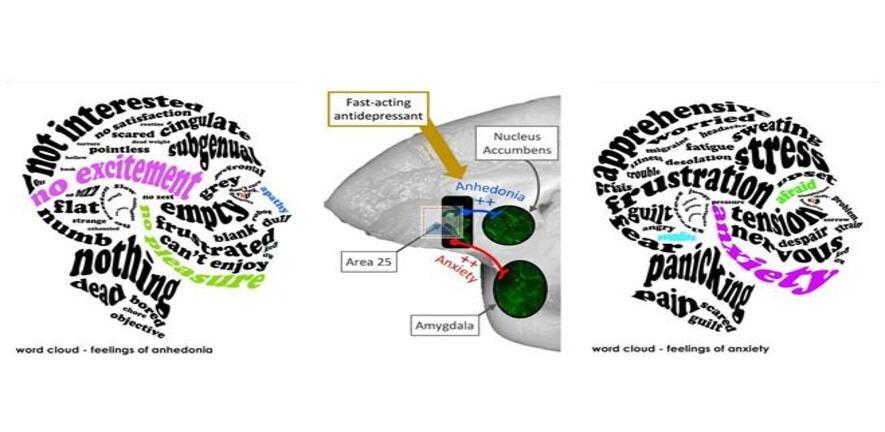
Submitted by Emily Rigby on Thu, 13/04/2023 - 12:54
A study by a team of PDN researchers under the leadership of Professor Angela Roberts and published in Science Translational Medicine, reveals how the anxiety and anhedonia that is induced by overactivation of Area 25, a region of the frontal lobe intimately associated with depression in humans, is dependent upon two separate pathways.
The team was led by senior postdoctoral scientist, Dr Christian Wood, working with Dr Laith Alexander, Dr Andrea Santangelo, Lauren McIver, Gemma J. Cockcroft of PDN, and Dr Johan Alsio from the Dept. of Psychology.
Working with marmosets, and using a cutting-edge technique called chemogenetics, this study implanted neuron activating proteins called designer receptors exclusively activated by designer drugs (DREADDs) into Area 25 using specially designed non-replicating viruses. With these DREADDs, combined with the selective targeting of the designer drug the authors revealed that anxiety, in response to uncertain threat, was heightened by activation of an area 25 pathway to the amygdala whilst anhedonia, the loss of pleasure, was induced by activation of a pathway from area 25 to the nucleus accumbens. Importantly, the nucleus accumbens pathway did not induce anxiety and the amygdala pathway did not blunt reward anticipation, revealing pathway specific symptoms.
Previously, the same team had implicated the rapid antidepressant, ketamine, in the treatment of the anhedonia-like but not anxiety-like behaviour caused by activation of Area 25. Here, by injecting a small amount of the rapidly acting antidepressant ketamine directly into the nucleus accumbens, Dr Wood and colleagues was able to prevent Area 25 activation from blunting anticipatory arousal for reward for over a week; similar to its clinical effect in humans when given systemically. These data suggest that ketamine may act selectively within this region to ameliorate anhedonia and provides selective insight into how these newer fast acting antidepressants may treat individual symptoms.
By conducting this detailed analysis of mental health related brain pathways, the Roberts lab are beginning to piece together how different circuits produce individual symptoms and how they can be treated. These insights are crucial given the high prevalence of such disorders and the need to move towards more individualised treatment strategies.

